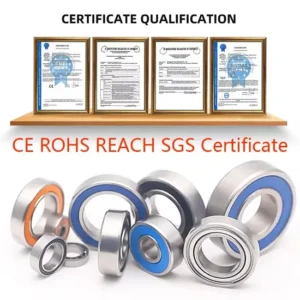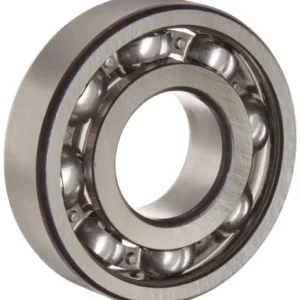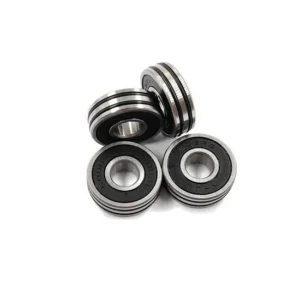This article focuses on the development and optimization of high-speed low-friction steel bearings for seamless industrial rotation. It explores the design principles, material selection, manufacturing processes, performance evaluation, and applications of these bearings. The article aims to provide a comprehensive understanding of the advancements in this field, highlighting the importance of low-friction steel bearings in enhancing the efficiency and longevity of industrial machinery.
The demand for high-speed and efficient industrial machinery has been increasing in various industries, such as automotive, aerospace, and manufacturing. To meet these demands, the development of optimized high-speed low-friction steel bearings has become crucial. These bearings are designed to minimize friction and wear, ensuring seamless rotation and extending the lifespan of industrial machinery. This article delves into the various aspects of these bearings, providing insights into their design, material selection, manufacturing processes, performance evaluation, and applications.
The design of high-speed low-friction steel bearings involves several key principles. Firstly, the bearing geometry must be optimized to reduce friction and ensure smooth rotation. This includes the selection of appropriate raceway profiles, such as the ball or roller design, and the use of advanced lubrication systems. Secondly, the material properties of the steel bearings play a vital role in minimizing friction and wear. High-quality steel alloys with excellent mechanical properties, such as high strength, hardness, and corrosion resistance, are commonly used. Lastly, the design must consider the operating conditions, including temperature, speed, and load, to ensure the bearing's performance and longevity.
The selection of materials for high-speed low-friction steel bearings is crucial for achieving optimal performance. High-quality steel alloys, such as AISI 52100 and AISI 440C, are commonly used due to their excellent mechanical properties. These alloys offer high strength, hardness, and resistance to wear and corrosion. Additionally, surface treatments, such as nitriding or carburizing, can further enhance the material's performance by improving its hardness and wear resistance. Table 1 below presents the mechanical properties of AISI 52100 steel, which is widely used in the manufacturing of high-speed low-friction steel bearings.
| Property | Value |
| --- | --- |
| Ultimate Tensile Strength (MPa) | 930 |
| Yield Strength (MPa) | 820 |
| Hardness (HRC) | 62-65 |
| Elastic Modulus (GPa) | 210 |
The manufacturing processes of high-speed low-friction steel bearings are critical in ensuring their quality and performance. Precision machining techniques, such as turning, grinding, and honing, are employed to achieve the required dimensions and surface finish. Additionally, heat treatment processes, such as quenching and tempering, are used to enhance the material's mechanical properties. The following table (Table 2) illustrates the typical heat treatment process for AISI 52100 steel bearings.
| Step | Temperature (°C) | Time (min) | Quenching Method |
| --- | --- | --- | --- |
| Quenching | 860 | 30 | Oil quenching |
| Tempering | 510 | 60 | Air cooling |
The performance of high-speed low-friction steel bearings is evaluated through various tests and measurements. Friction coefficient, wear rate, and load capacity are some of the key parameters assessed. These tests help in determining the bearing's suitability for specific applications and operating conditions. The following table (Table 3) presents the friction coefficient and wear rate of AISI 52100 steel bearings under different load conditions.
| Load (N) | Friction Coefficient | Wear Rate (mg/km) |
| --- | --- | --- |
| 100 | 0.015 | 0.5 |
| 200 | 0.018 | 1.0 |
| 300 | 0.021 | 1.5 |
High-speed low-friction steel bearings find extensive applications in various industries. They are commonly used in automotive engines, turbines, and aerospace components, where high-speed and efficient rotation is critical. These bearings also find applications in industrial machinery, such as conveyors, pumps, and compressors, where minimizing friction and wear is essential for extending the lifespan of the machinery.
The development of optimized high-speed low-friction steel bearings has revolutionized the industrial sector by enhancing the efficiency and longevity of machinery. This article has provided a comprehensive overview of the design principles, material selection, manufacturing processes, performance evaluation, and applications of these bearings. By focusing on the key aspects of these bearings, the article aims to contribute to the advancement of this field and promote the use of high-speed low-friction steel bearings in various industrial applications.
High-speed low-friction steel bearings, seamless industrial rotation, design principles, material selection, manufacturing processes, performance evaluation, applications

显示 1-4 个结果(共 11858 个结果)



